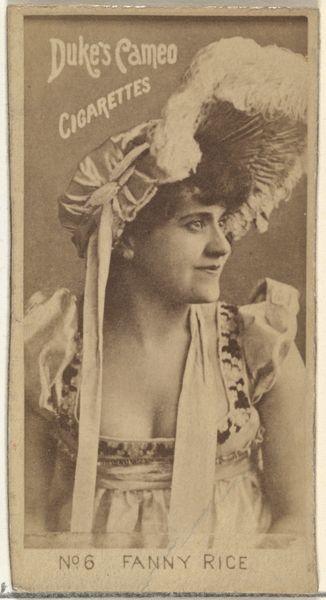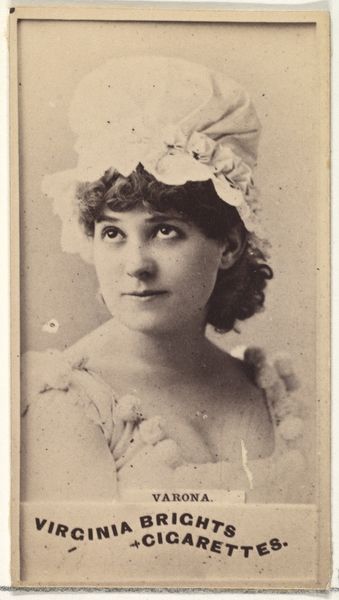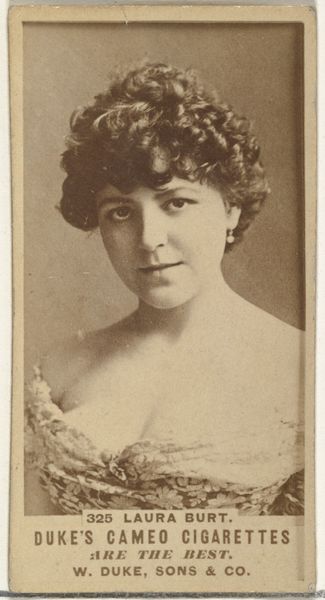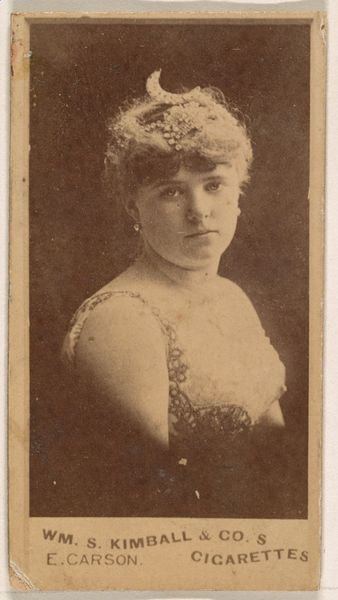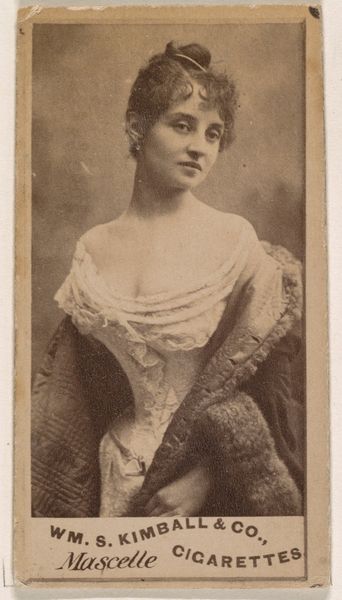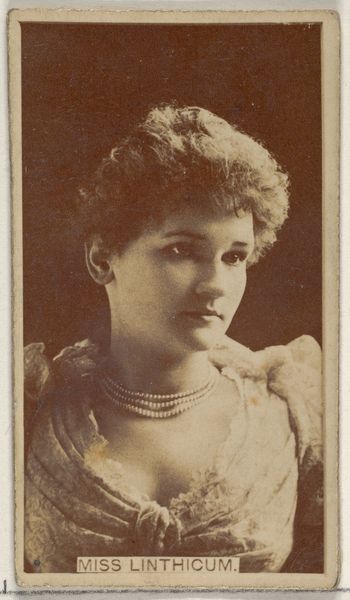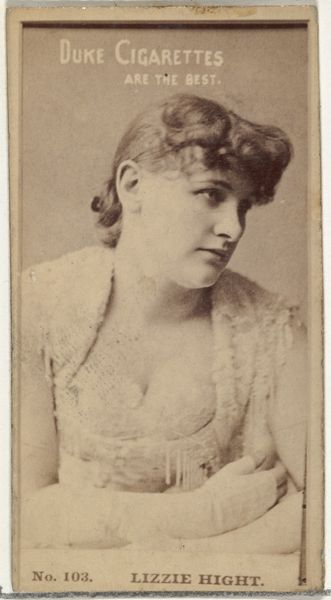
Card Number 30, Violet Cameron, from the Actors and Actresses series (N145-2) issued by Duke Sons & Co. to promote Cross Cut Cigarettes 1880s
0:00
0:00
print, photography
#
portrait
# print
#
impressionism
#
photography
#
photojournalism
#
19th century
Dimensions: Sheet: 2 5/8 × 1 7/16 in. (6.6 × 3.7 cm)
Copyright: Public Domain
Curator: This photographic print is from a series created by W. Duke, Sons & Co. in the 1880s as trade cards to promote Cross Cut Cigarettes, featuring actors and actresses of the time, this one showing Violet Cameron. Editor: It has a haunting quality. The sepia tones evoke a sense of nostalgia, but also, the rigid pose, combined with her almost distracted gaze... it feels like we are witnessing a performance of femininity manufactured for mass consumption. Curator: Absolutely, these cards reveal a lot about gender and celebrity culture. Violet Cameron, like many actresses, was both celebrated and objectified, used to sell a product, reinforcing very specific ideas about female beauty and the value of celebrity at that time. We might even argue that tobacco companies participated in the solidification of beauty standards, even at the cost of public health. Editor: It makes me wonder about the production of these cards themselves. What processes and materials were involved in mass-producing these images? How did the labor that enabled the rapid circulation of Cameron's image get distributed, especially considering the exploitative conditions that prevailed in factories at this time? And to what extent were Cameron herself paid, or even consulted? Curator: Those are critical questions to pose, thinking through labor, compensation, and power dynamics are essential. Cameron's agency is obscured by this context. And that same obscurity persists in the background narrative as it is written in that moment about womanhood and celebrity. Her worth gets equated with her perceived attractiveness to men who purchased these cigarettes, diminishing her professional achievements as a stage performer. Editor: Exactly. We should also consider the material itself. These cards were cheap ephemera, mass-produced, meant to be discarded... Their survival and presence here signals something else: the elevation of these images as collectable artifacts. But can we really separate that from the capitalist project? Curator: These trade cards offer a lens into the construction of celebrity identity, a lens heavily influenced by gender, capitalism, and the rise of mass media. Looking at them can encourage us to question and examine those influences critically today. Editor: Ultimately, it challenges our consumption habits. Recognizing that celebrity still has material consequences.
Comments
No comments
Be the first to comment and join the conversation on the ultimate creative platform.


